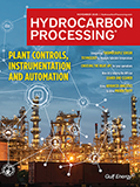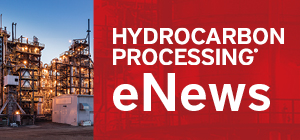Parker Hannifin joins iHAPC project to test H2 and argon for cleaner and more energy-efficient engine technologies
Parker Hannifin announced its involvement in the Integrated Hydrogen-Argon Power Cycle (iHAPC) project, a collaborative research initiative to advance cleaner and more energy-efficient engine technologies.
Led by the University of Vaasa and supported by Wärtsilä under the WISE (Wide and Intelligent Sustainable Energy) program, the project will develop and test a prototype engine that uses hydrogen and argon to achieve a significant efficiency boost.
The initiative unites Finnish research institutions, technical experts, and industry partners, including Wärtsilä Finland Oy, VTT Technical Research Centre of Finland, University of Oulu, Vahterus Oy, Vaisala Oyj, and TotalEnergies.
Parker Hannifin Manufacturing Finland Oy, located in Urjala, plays a key role by designing an advanced filtration system to ensure the closed-loop reuse of argon.
Argon, a key component of the hydrogen-argon power cycle, is recaptured after combustion, and Parker’s system removes residual water and other contaminants, ensuring clean argon for reuse.
“At Parker, we’re proud to contribute our engineering expertise to innovations that drive cleaner and more sustainable technologies,” says Mikko Merikoski, Senior Technology Engineer at Parker’s Manufacturing Facility in Finland. “The hydrogen-argon power cycle represents a major step forward in improving the efficiency of hydrogen power generation.”
Hydrogen-Argon Power Cycle: A step towards efficiency
The iHAPC project which kicks off in January 2025 replaces conventional air intake with a mix of argon and oxygen during combustion. Argon’s superior heat capacity ratio enables the engine to produce the same power output with significantly less fuel, potentially increasing combustion engine efficiency up to 20%.
In this closed-loop process, hydrogen, oxygen, and argon are the inputs, producing only water and recycled argon as byproducts. Most water is removed via a condenser built by Vahterus Oy, while Parker’s filtration technology eliminates any remaining moisture and impurities.
Balancing engines are critical for stabilizing power supply alongside intermittent renewable sources like wind and solar. Today’s most efficient engines run on gas but are ready to transition to sustainable fuels such as hydrogen. By 2030, sustainable fuel production is expected to reach 38 million tonnes—exceeding current demand by one-third and accelerating the shift towards renewable energy systems.
Rasmus Teir, Director of Sustainability & Future Plant Concepts at Wärtsilä Energy, commented: “We have the technologies required to achieve a 100% renewable energy future. Our goal is to continually innovate solutions that improve both affordability and sustainability. The argon power cycle is a significant technological breakthrough with the potential to positively impact these goals.”
Professor Maciej Mikulski from the University of Vaasa, the project leader, said: “The argon power cycle allows for the complete valorization of green hydrogen with exceptional power generation efficiency. This could represent a major breakthrough for the energy sector. The University of Vaasa is dedicated to advancing innovative energy solutions with a strong focus on sustainability. Our expertise in fuel analytics, modeling and simulation, powertrain testing, and control development equips us well to lead this project.”






Comments